Martin Seligman is recognised as one of the key figures in the growth of positive psychology. In the video above he gives an introduction to the approach.
His work led to creating the Positive Psychology Center at The University of Pennsylvania. The Center says:
Positive Psychology is the scientific study of the strengths and virtues that enable individuals and communities to thrive … It has three central concerns: positive emotions, positive individual traits, and positive institutions.
Other researchers in the field include people such as Ed Diener, Robert Diswas-Diener, Christopher Peterson, Tal Ben-Shahar and Sonja Lyubomirsky. Christopher Peterson wrote:
Positive psychology is the scientific study of what goes right in life, from birth to death and at all stops in between.
Senia Maymin, Publisher and Editor-in-Chief of Positive Psychology News Daily, writes:
Positive Psychology studies what is right with people and how people live the good life.
Whilst there are many different definitions, most people agree on the overall themes.
Positive Psychology is the scientific study of what people do right to live healthy, happy and fulfilling lives.
It is recognised that many people have studied these themes for centuries. The Ancient Greeks, for example, studied how to follow certain virtues and live in a state of eudaimonia.
Christopher Peterson also pointed out that many Eastern spiritual leaders, such as Confucius and Lao-Tsu, focused on the importance of living in harmony with one’s spirit, nature and serving a greater calling. This could also result in a state of peace or happiness.
The following pages look at some of the researchers and findings in Positive Psychology.
Martin Seligman
Martin has said: “My aim is that psychology and maybe psychiatry will increase the tonnage of happiness in the world.”
Born in 1942 in the USA, Marty is one of the founding fathers of the modern positive psychology movement. He has written several best-selling books, such as Learned Optimism, Authentic Happiness and Character Strengths and Virtues, the latter co-written with Christopher Peterson.
This short introduction provides a taster of his work. The definitive version can be found at The Positive Psychology Center, which is based at the University of Pennsylvania. You can access this at:
He spent the first part of his psychological career studying misery. Moving on from treating ‘learned helplessness’, he studied people who were optimistic. What did they do right to live fulfilling lives?
Marty passed over a threshold after being elected president of the American Psychological Association.
He was asked to pick the themes he wanted to work on during his Presidency. After a period of reflection, he chose to focus on positive psychology.
Marty believes the word ‘happiness’ does not do full justice to the study of enriching lives, but it does provide a useful label.
Many of his ideas on the topic were explained in the book Authentic Happiness. He believes that within happiness there are three kinds of lives that people can lead. Here is a brief overview.
The Pleasant Life
This is the ‘life of enjoyment’. It is one where people get positive feelings from pursuing their interests and other pleasurable experiences.
The Good Life
This is the ‘life of engagement’ or absorption. It is one where people immerse themselves in certain activities and experience a state of flow.
This happens when there is a positive match between a person’s strength and the task they are doing.
The Meaningful Life
This is the ‘life of affiliation’. It is one where people experience a sense of purpose by using their higher strengths to serve or be part of something greater than themselves.
So what is the magic combination?
Looking at it empirically, says Marty, the fulfilling life appears to be: The Meaningful Life + The Good Life + some aspects of The Pleasant Life. In that order.
Marty continues to go from strength to strength. His latest book on the topic of well-being and happiness is called Flourish.
Ed Diener
Ed is the Joseph R. Smiley Distinguished Professor of Psychology at the University of Illinois in Urbana-Champaign. He has pioneered the measurement of wellbing and happiness in countries around the world.
Denmark, for example, often rates highly as one of the happiest country in the world. Ed says that, to some extent, this is because: ‘the Danes trust each other’. Poor people in Denmark are relatively happy, largely because there’s a strong social safety net.
Economic growth doesn’t necessarily drive up happiness. People do need a sustainable income in their society but, beyond a certain figure, more money does not necessarily increase happiness.
People in highly competitive societies, for example, are often comparing themselves against others. Happy individuals, on the other hand, are often comfortable with themselves. They aim to become the best kind of person they can be, rather than judge themselves against others.
Positive relationships with others are important. In Costa Rica, for example, people help each other. They also enjoy life and celebrate a lot. At the other end of the scale, political repression and poverty often lead to people feeling unhappy.
Measuring Life Satisfaction
Ed is the co-author of a questionnaire that people can use to measure their life satisfaction. He has made this publicly available and it was used, for example, during the BBC Television series The Happiness Formula. Here is the questionnaire.
Happiness
Ed worked together with his son, Robert Biswas-Diener, to publish Happiness: Unlocking The Mysteries of Psychological Wealth. Here they explain some key themes in the book.
Psychological wealth is more than money. It is also your attitudes, goals and engaging activities at work.
Happiness not only feels good, it is also beneficial to relationships, work and health.
It is helpful to set realistic expectations about happiness. No one is intensely happy all of the time.
Thinking is an important aspect to happiness. Our theory of Attention, Interpretation, and Memory (AIM) helps readers increase their psychological wealth.
Several myths are addressed in this book: Does money buy happiness? Is there a happiness set-point? Is happiness a personal pursuit? The authors go on to give more details. These include the following points.
We present the research showing the benefits of happiness to health, work and relationships.
We discuss the need for ‘negative emotions’.
We show the danger of averages when applied to individuals, such as for religion or marriage. Although married or religious people might on average be happier, this may or may not apply to specific individuals. There are dangers in using the group averages from research and applying them to individuals.
We present self-scoring measures for 7 variables, for positive and negative emotions, psychological well-being, positive attitudes, and so forth.
We expose myths such as the “Set-point,” that says happiness is unchanging and caused by temperament, and the myth that money does not aid happiness.
Another myth is that happiness is completely within the individual (it certainly partly is) but the society in which one lives can make a huge difference too.
We have a lot of fun stories, for example from our travels collecting data around the world.
You can discover more about Ed’s work via the following links. The first his to his academic biography, the second to the website devoted to the pursuit of happiness.
http://diener.socialpsychology.org/
http://www.pursuit-of-happiness.org/
Sonja Lyubomirsky
Sonja is a Professor at the University of California and has spent many years studying happiness. The video above is an excerpt from a talk Sonja gave at the Greater Good Science Center. In it she outlines some of the key findings from her research.
The How of Happiness
So how do people become happy? And how can they maintain happiness?
Sonja and her team of researchers say that our happiness is influenced by the following factors.
50% is influenced by our Character – our Genes.
10% is influenced by our Circumstances.
40% is within our Control.
Writing on her official site, Sonja says:
“My empirical findings over the years have revealed that chronically happy and unhappy individuals differ systematically and in a manner supportive of their differing temperaments in the particular cognitive and motivational strategies they use.
“For example, my students and I have found that truly happy individuals construe life events and daily situations in ways that seem to maintain their happiness, while unhappy individuals construe experiences in ways that seem to reinforce unhappiness.
“In essence, our research shows that happy individuals experience and react to events and circumstances in relatively more positive and more adaptive ways.”
The Benefits of Happiness
Sonja asks if being happy simply leads to feeling good or does it have other benefits? She and her students have found it has many benefits for individuals, families, communities and the wider society. These include:
Higher income and superior work outcomes. For example, greater productivity and higher quality of work.
Larger social rewards. For example, satisfying and longer marriages, more friends, stronger social support and richer social interactions.
More activity, energy, and flow, and better physical health. For example, a bolstered immune system, lowered stress levels, and less pain. It can also lead to a longer life.
She adds:
“The literature, my colleagues and I have found, also suggests that happy individuals are more creative, helpful, charitable, and self-confident, have better self-control, and show greater self-regulatory and coping abilities.”
How To Increase Happiness
Sonja is frequently asked how people can increase their happiness. She often answers by saying that she is a scientist and tends to avoid self help books.
Nevertheless, she says, the research seems to show that some of the advice that Grandma gave may well be true. These include some of the following activities.
Gratitude.
Regularly setting aside time to count one’s blessings. Other researcher’s studies of individuals who set aside half an hour a day to count their blessings show that such people increase and maintain their happiness.
Kindness.
Being kind to others. The act of giving to others creates a good feeling in both oneself and, hopefully, in others. This creates a positive circle in one’s life.
Positive Attitude.
Developing positive scripts. Reflecting on positive experiences, recalling times of overcoming difficulties, talking to oneself in a positive way regarding future opportunities.
Sonja and her students are also looking at the following themes regarding increasing one’s happiness.
Life Goals.
Listing and taking action on ‘baby steps’ towards these goals.
Forgiveness.
Forgiving people in one’s life, but not at the expense of becoming a victim.
Savouring Positive Experiences.
Such as using one’s five senses to relish daily moments.
Using one’s Signature Strengths in New Ways.
Continuing to develop doing the things one does best.
Tal Ben-Shahar
Tal Ben-Shahar loves teaching and his Harvard University course on How To Be Happy attracted over 800 students.
Why teach such a course? Tal recalled his own days as a student. Even though he was an outstanding achiever, something was missing. So later he created the kind of course he was looking for as a student. This aimed:
To provide an introduction to the research in the field of happiness.
To provide practical ways the students can apply these ideas in their lives and communities.
This video provides an introduction to his work, in which he describes: “The greatest hits of positive psychology.”
So how can people be happier? Tal says some of the messages can sound corny, but the secret is in actually translating these into action.
It is for people to do these things, rather than just think about doing them. Here are some of the messages.
Accept painful emotions.
These are part of being alive. The only people who don’t feel pain are psychopaths and those who are dead.
Spend time with people you care about.
This quality time is enjoyable and also gives us energy to do other things.
Enjoy ‘time affluence’.
Appreciate life and the specific thing you are doing. Enjoy the moments, rather than try to do several things at once.
Simplify your life.
This makes it easier to appreciate life. At the moment we are trying to cram more and more into our days.
Exercise.
This is equivalent to some of the most powerful drugs that deal with depression or anxiety.
Breathe.
Learning to breathe deeply and properly can improve our sense of well-being.
Cultivate gratitude.
Research shows that people who keep a Gratitude Journal are more positive, says Tal.
This involves spending a few minutes each night writing down five things for which they are grateful. Such a simple exercise increases their optimism and even their health.
There are, of course, many other people who focus on elements of positive psychology. Finally, however, let’s return to the work of Martin Seligman.
In the video below he outlines what he calls the PERMA approach to enabling people to flourish. This acronym stands for Positive Emotions, Engagement, Relationships, Meaning and Accomplishment. Here is Martin explaining the model.


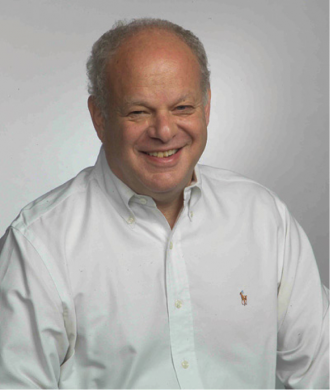
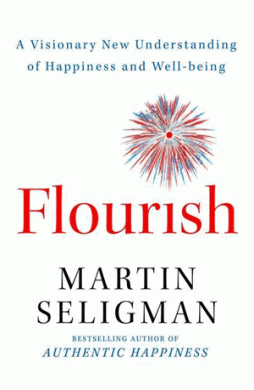
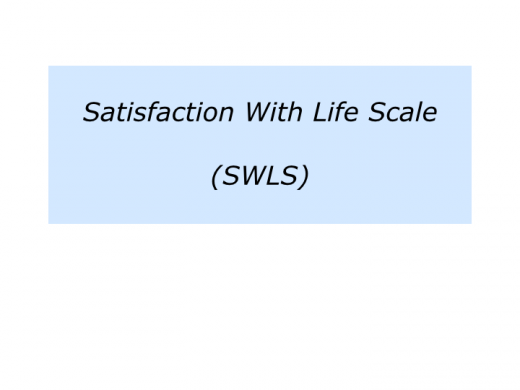
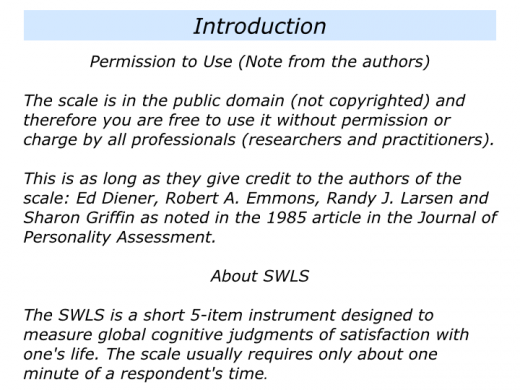

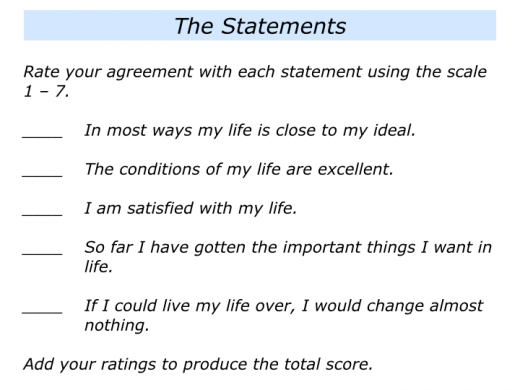
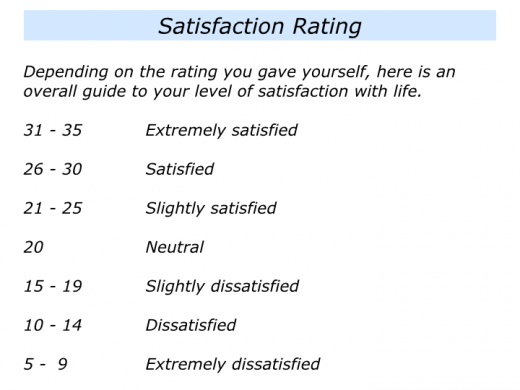
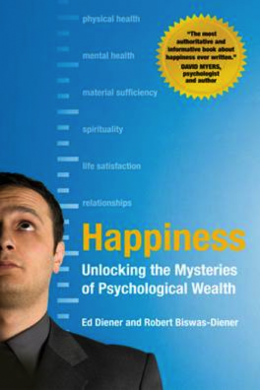
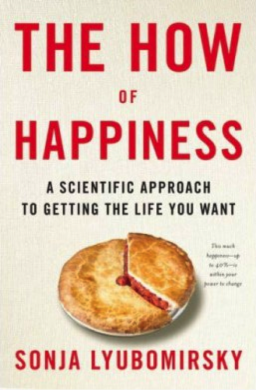
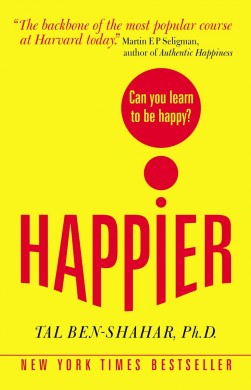




Leave a Reply